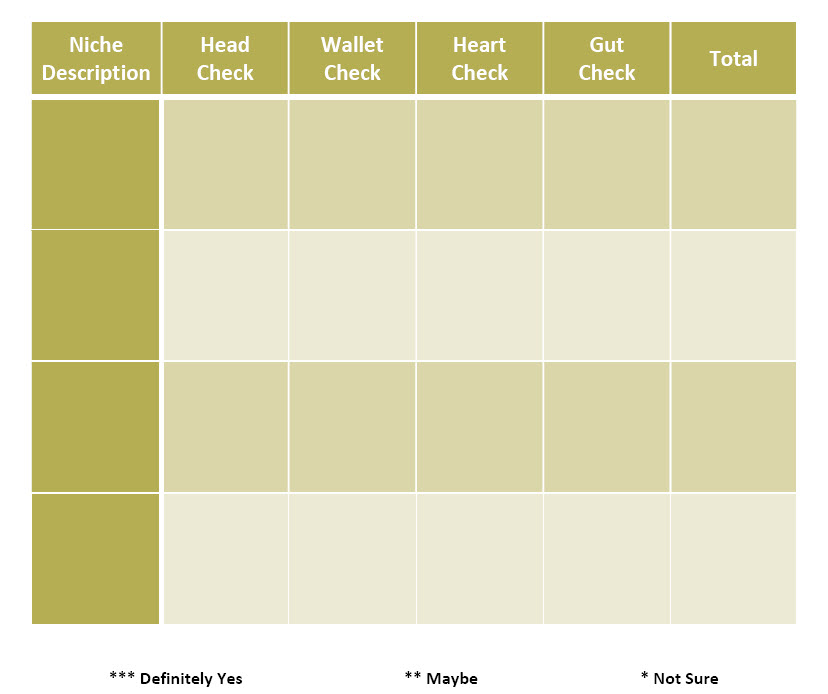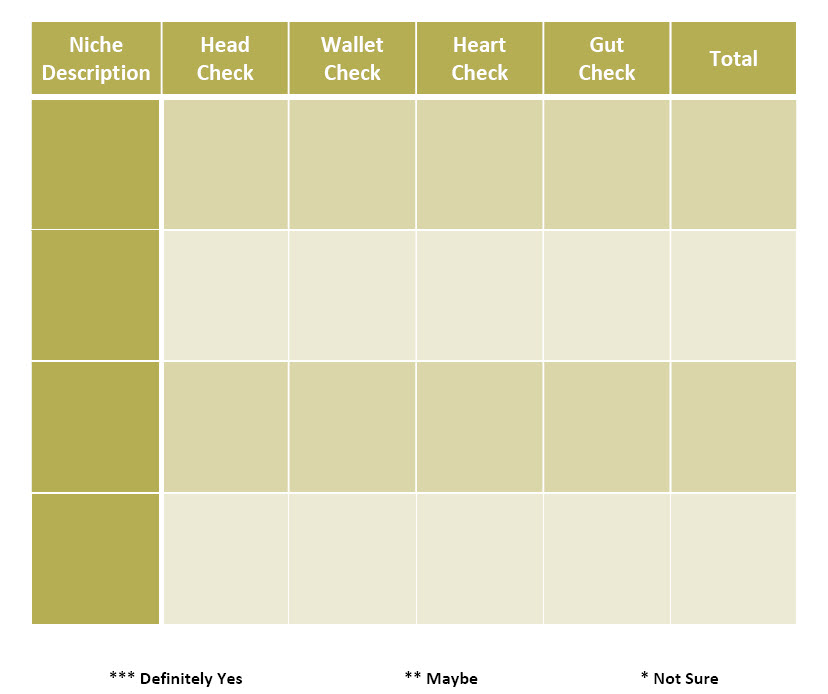
Today we’re going to address a problem that many early stage entrepreneurs run into, and that is the struggle to choose between a couple of viable niches. This is a serious concern because having a decent niche is the key to a successful business—if you don’t have a secure niche, nothing else in your business is going to work. I myself struggled with finding my niche when I first started my business. I was stuck between wanting to serve the corporate world and the entrepreneurial world. I struggled with it for eight months before I finally made the decision to drop the corporate side and just focus on entrepreneurs. Just like that, I ended up with a completely full client load for the first time. The reason why was simple:  I had chosen my niche, and so I was no longer confusing potential clients by trying to do too many things at the same time.
I had chosen my niche, and so I was no longer confusing potential clients by trying to do too many things at the same time.
That isn’t to say this was an easy decision, and it took a lot of time. That’s why I’ve created a little tool that my coaches and I have used with hundreds of our clients. I’ve found that it’s very useful for breaking things down and making the decision manageable.
The trick is that there are a couple of ways that you instinctively make decisions. Some people are very logical, while others are very emotion-based, and others rely on their intuition. However, your best decisions are made when you invoke all of your decision-making senses. This tool invokes the logic, the emotion, and the intuitiveness, and puts a little of the common sense in there as well. You can actually download this tool, but I will go through the questions here as well.
Basically what we do is we get you to choose based on your thoughts in the head, heart, wallet, and gut. The wallet is common sense. The head is logic. The heart is your emotion and passion. Gut is instinctive. When you download this tool you’ll see that there is a table where you can put up to four niches on the far left column. Most of my clients, however, are only struggling between two niches—and at this point in the process, hopefully that’s all you’re struggling with as well. As you can see, I have put in some examples so that you can get a look at what a complete table will look like, but you can put anything in the far left column here. For example, perhaps you’re struggling between serving one-person based entrepreneurial companies, or serving twenty to fifty person entrepreneurial companies. Just put your potential choices in the Niche Description column.
Under head, heart, wallet and gut, as you can see, you fill each box with one to three stars. Three stars means that you’re absolutely sure, while one star means that you’re not really sure at all, and two stars is somewhere in the middle. In this example, the head for the Entrepreneur niche is very good, and the C-Level Exec niche was a little bit worse for what they were trying to do. With the wallet check, however, the C-level Exec made them feel they could earn a lot more—for the Entrepreneurial niche that’s going to be more difficult. For the Entrepreneur check, this person just didn’t want to work with entrepreneurs, so that’s a very low score. But they were passionate about C-Level Execs. When they did the gut check, the C-Level Exec won out. When we totaled up the score, it became quite clear that this person should be working with C-Level Execs.

That’s roughly how it works, but to make things easier, I’ve included some questions for you consider for when you fill out the graph. They’re on the second page when you download, but I’m also going to ask them here.
In your logical, head category, the questions really boil down to, “Is this a proven and established niche?” Many people misunderstand this and believe that it’s best if there is no competition. However, that is actually a warning sign. If nobody is out there doing it, it doesn’t mean that nobody’s thought of it. It probably means that people have thought of it, tried it, and failed, because they couldn’t succeed at it. If you can see other people making money out of this job, then you can as well.
The next question is, “Can I find a connection to this market? Can I find clients in this market?” You need to be able to find this market easily and inexpensively. If you can’t, you might be adding too much difficulty into your business. You want clients to come to you—you don’t want to spend all of your time seeking them out.
The third question is, “Does this market have a problem that I can solve?” In general, people are motivated to spend money when they are trying to fix a problem. If your market is absolutely fine and doesn’t have a big thing that they need, that is not the most logical move for starting a business. Another thing that is good to look for is, “Is the problem big enough that they’re already looking for a solution?” It’s better not to have a business where you have to persuade people that they’ve got a problem.
Next are the wallet questions. When you look at these, you’re really looking for the affordability and financial aspects of it. Will this business actually meet my financial goals? Does it have the potential? Can this target market afford to pay for my services? Many people want to serve a market that is so broke chances are they are never going to be able to come up with funds. Next, you’ll want to look at what the industry charges for services. For example, if the industry standard for a massage is $50-$100, you can’t charge $1,000. Knowing how much you can charge and offsetting that against potential costs is a part of building in feasibility.
Your heart questions are more about self-fulfillment. Does this work feed my soul? Will I spend my days doing things that I love? How passionate am I about this work? They may seem a little ridiculous, but those are important things when you’re building your dream business.
And then lastly, your gut: does this feel right. One technique that works for me and many of my clients is when I shut out all the worldly noise and advice of everybody else and just lean inwards and listen to myself and trust myself, what comes out. What does your inner knowing tell you? Those questions will really go and exercise the part of you that don’t usually engage in making a decision, and it’ll come up with a good decision.
What I’d like for you to do is make a decision on your niche and then give yourself the luxury of taking two months to decide. It doesn’t happen with the sky opening and a big voice beaming down “You should do this niche!” It never happens that way. People decide, but they’re not always sure when they decide, so the market will help them crisp up their decision. I can’t guarantee that you’re making the right decision. Only time and the market can tell that. But putting yourself to this test will greatly increase your chances of making the right decision, and it will be an educated decision. And in the end, you need to pick a niche and focus on it to know if you’re truly going to succeed or not. You cannot get the feedback you need when you’re doing multiple niches because the market gets too confused about what you’re offering. Pick a niche, and if it doesn’t work out, then try the other niche.
Here is what I want you to do:
Step One: Download this tool
Step Two: Carve out an hour and give yourself the time to do this work.
Step Three: Make your decision. This tool will give you all the information you need to make that decision.
Step Four: Get into action. The market will tell you if you made the right decision or not and help you to crisp up your niche.
As always, I hope that this has been helpful for you. Good luck!



Leave a Reply